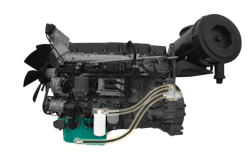When it comes to spills in the shop, there are numerous ways a spill could occur. When replacing fluids on a vehicle, fluid exchange equipment has been built with spills in mind. Preventive measures are a part of the equipment’s design in order to help reduce the risk of spills during the fluid exchange process.
The simplest preventive measures that can be taken during these procedures are to drain the fluid down below the connection level, and make sure to always have a catch pan so any stray fluids are contained, explains Frank Casale, vice president of Flo-Dynamics. Flo-Dynamics is a manufacturer of automotive maintenance equipment, such as transmission, power steering, coolant, A/C, and brake system fluid exchange/recharging.
As for the actual built-in measures taken with this equipment, many systems are closed-loop, meaning the system virtually eliminates the potential for spills. Matthew Walley, product sales manager for Parker Hannifin, a manufacturer of motion and control technologies, advises that even with a closed-loop system, technicians need to be aware of all parts of the system. For instance, make sure the hose on the other end of the fluid being evacuated is securely positioned in the final waste drum to prevent any spilling. Walley also mentions devices or features that can be included on fluid exchange equipment, such as non-spill valves, which can help prevent spills during the disconnect.
Another way to keep spills at bay is to hard-plumb the machine directly into a waste tank, says Vivek Bedi, CEO of ESOC, a manufacturer of eco-friendly fluid exchange technologies for preventive maintenance of heavy and light duty engines. That way there’s no handling, no spills, and no mess to clean up.
With or without all these spill preventing features, Walley says, “The main aspect to mitigating those spills is just being mindful of all the access points that you have on the type of equipment.”
About the Author
Emily Markham
Assistant Editor | Vehicle Repair Group
Emily Markham is an assistant editor for the Vehicle Repair Group.
With an education based in writing and editing, Markham uses her knowledge to assist with the creation of content for Endeavor Business Media Vehicle Repair Group’s publications—Fleet Maintenance, Professional Tool & Equipment News (PTEN), and Professional Distributor—as well as their website, VehicleServicePros.com.

